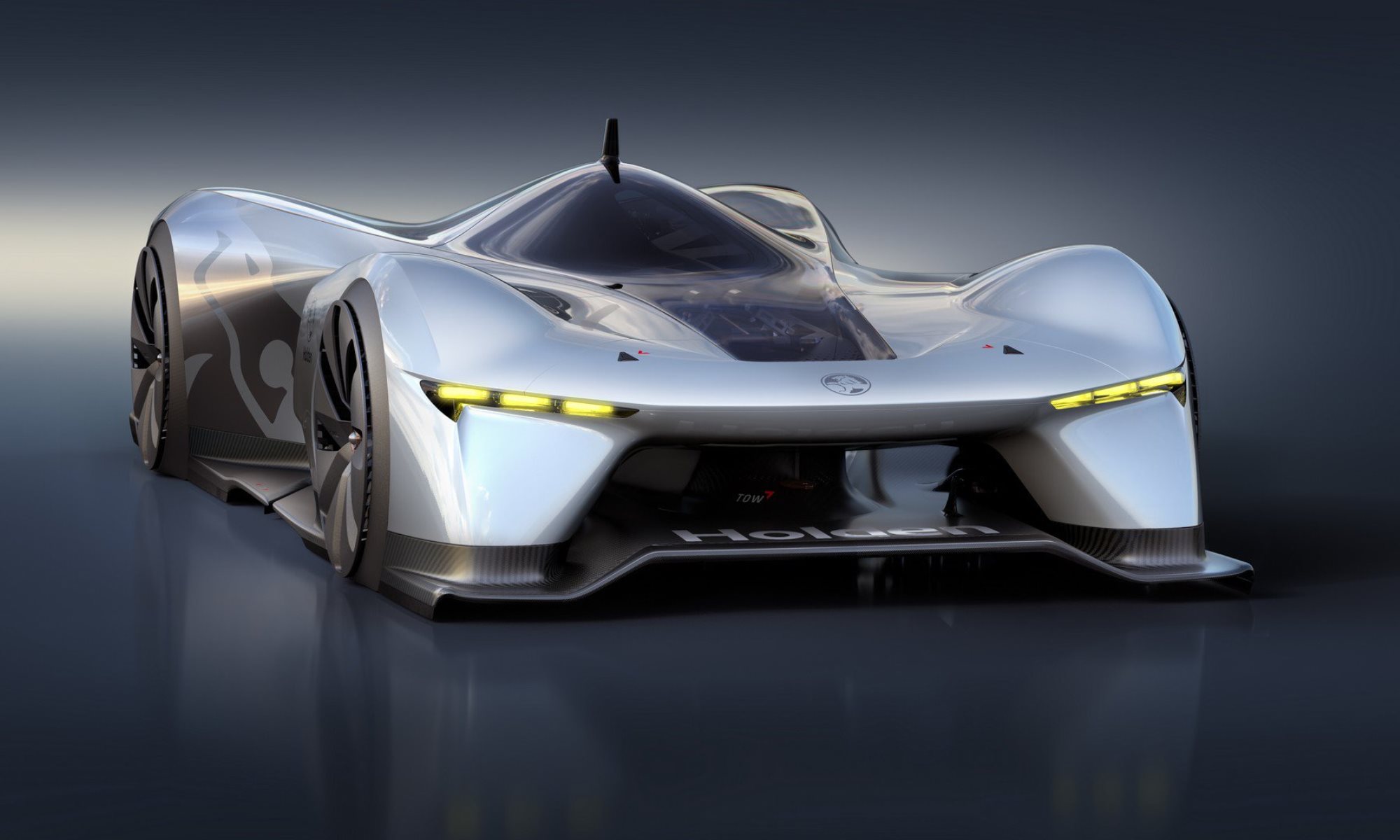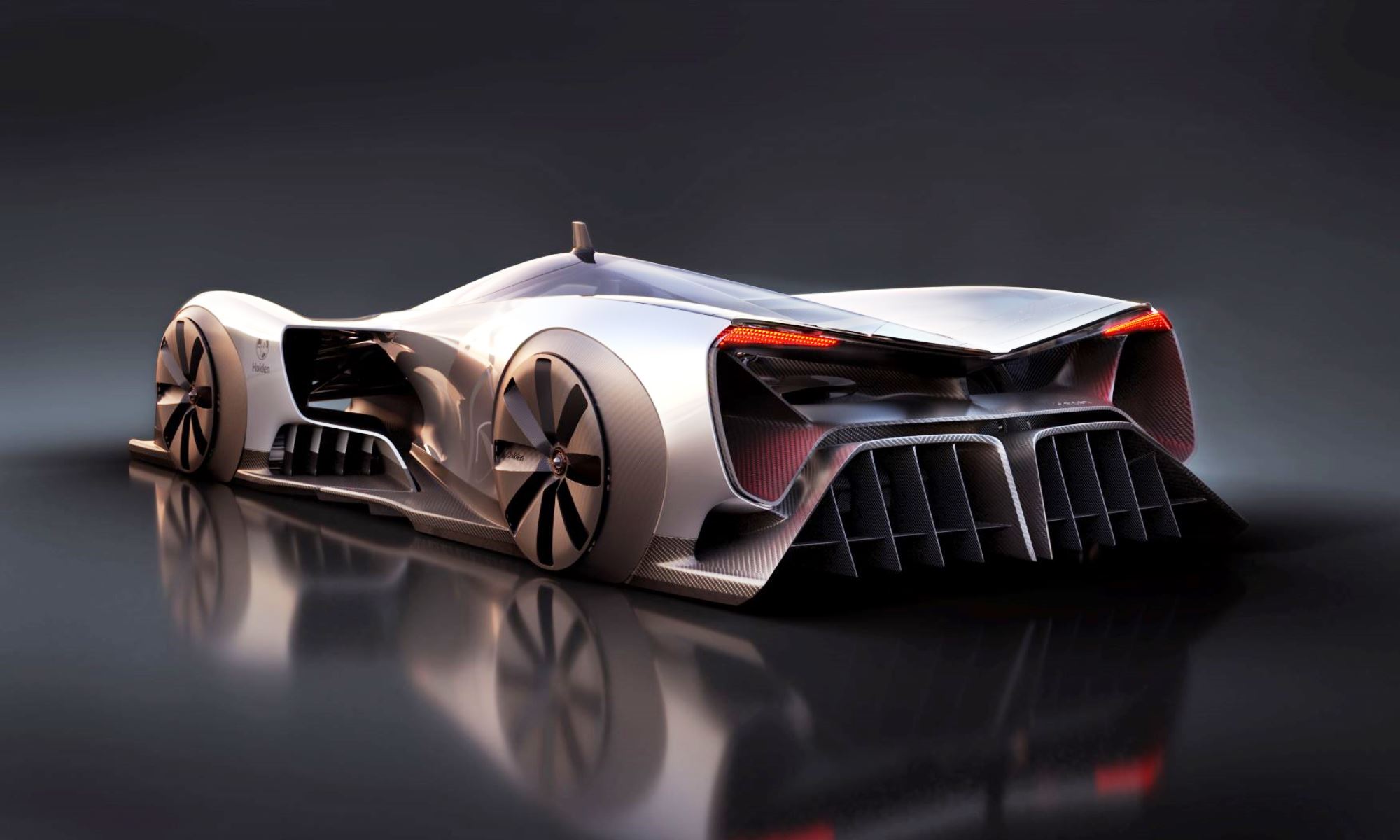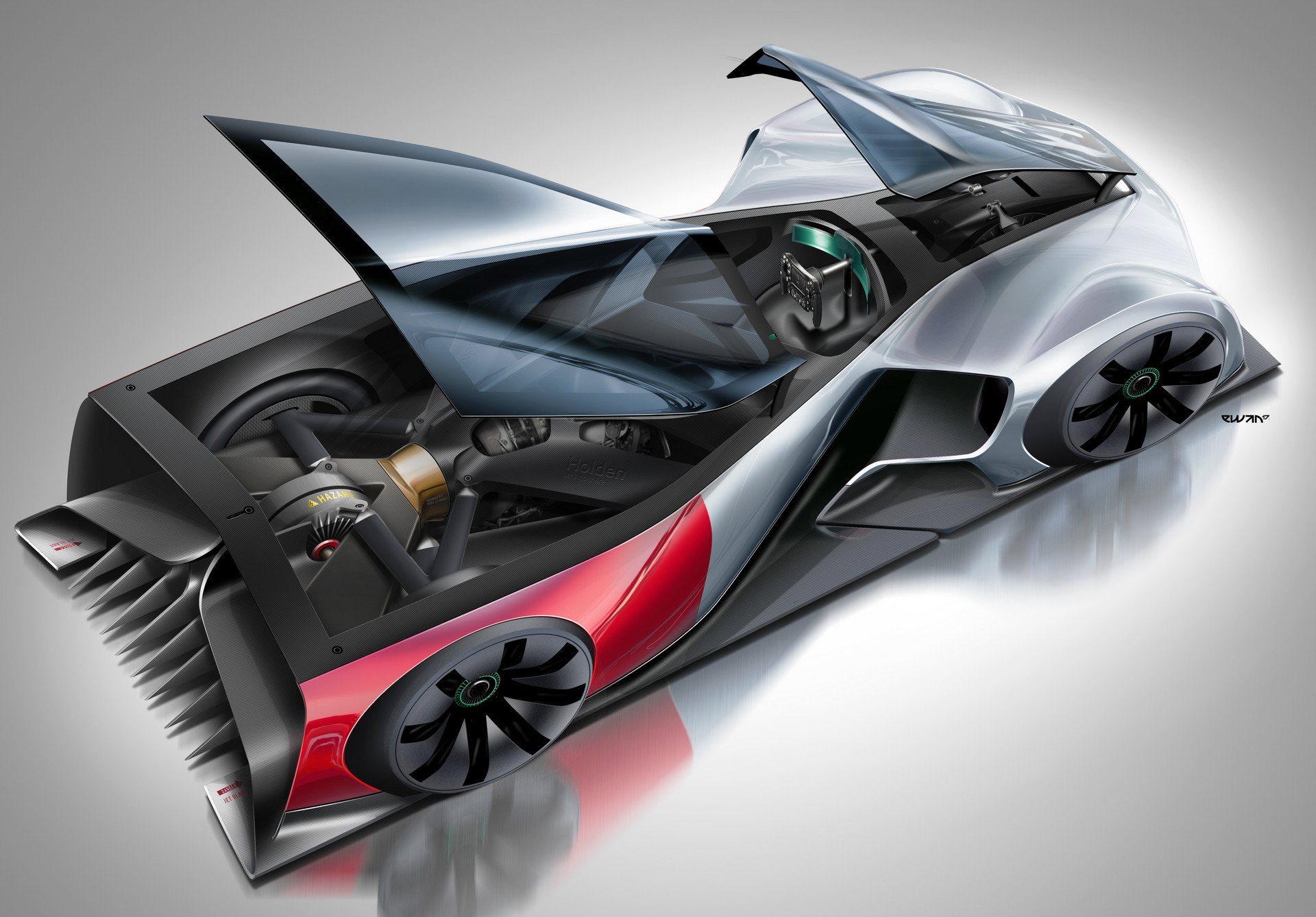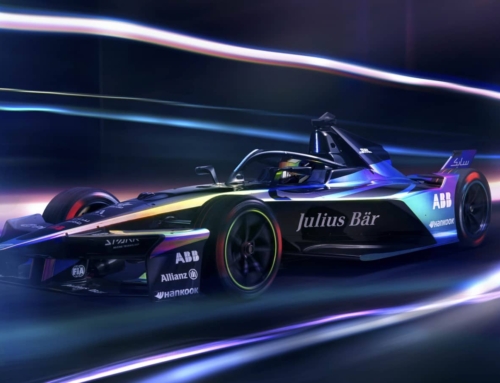This is the Holden Time Attack Concept. It was created by the firm’s in-house design team to pay tribute to the 50th anniversary of Holden’s first win at the famous Bathurst race in 1968.
Electric power
The Holden Time Attack Concept is powered by four electric motors, one per wheel. The total combined output is 1 000 kW and a whopping 3 240 N.m of torque. Each motor puts power to the wheels through a three-speed planetary gearbox. Individual wheel motors allow for torque vectoring. The four motors draw on a graphene, solid-state 25 kWh battery pack capable of charging in just 90 seconds using an 800V/1250 A charger.
Click here to view an all-electric racer concept from Mercedes-AMG.
Here’s another by Audi and two very cool Porsche racecar concepts.
Based on a carbon-honeycomb structure the low-slung racer weighs just 900 kg. Holden says the Time Attack Concept will be able to accelerate from 0 to 100 km/h in an incredible 1,25 seconds. Top speed is rated as 480 km/h. It is estimated that Time Attack Concept would be able to lap the famous Mount Panorama hillside track in about 1 min 29,30 seconds. To put that into perspective a McLaren 650S GT3 racer clocked a lap record of 2 min 01,5 two years ago.
Radical concepts
Everything about this concept model has been designed with performance in mind. The design boasts minimal frontal area to slice through the air. The showpiece of its aerodynamic repertoire is a set of four ‘ground effects’ fans. The concept uses electrically-controlled ‘cyclogyros’ spinning at 50 000 r/min. When required, the blades spring out and create downforce. The blades retract when not needed, allowing Holden Time Attack Concept to alter downforce from corner-to-corner on the fly. The active aero system works in conjunction with a hydraulically-actuated rear wing.
The design team responsible for creating the car claim that the Holden Time Attack Concept will be able to generate maximum lateral G-force of 6,5 G and will pull a neck-straining 6 G under braking. Speaking of braking, the clamps have regenerative capability on all axles, which provides up to 2,0 G braking force








![Hyundai Brings Full ICE Experience to Ioniq 5N EV [video]](https://doubleapex.co.za/wp-content/uploads/2024/04/Hyundai-Ioniq-5-N-1-1-500x383.jpg)

Leave A Comment